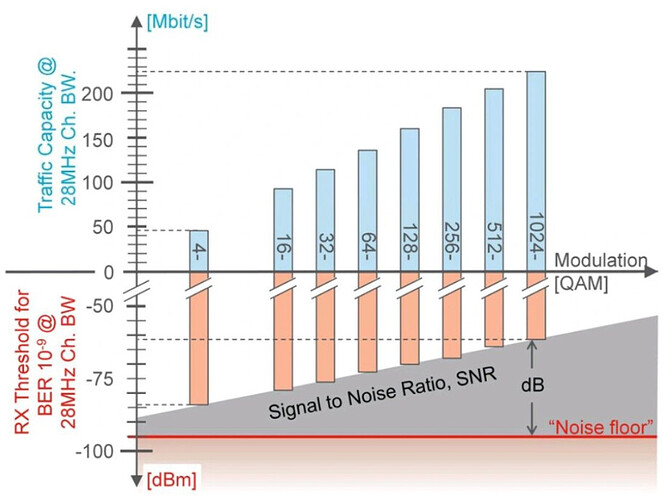-
As modulation order increasing, number of symbols increase too.
-
Tthen number of bits transmitted per symbol also increase.
-
But the probability of interference and errors increasing too.
-
To solve this issue we have to use adaptive modulation.
-
S/N ratio is an important paramters that represents the ratio between signal power to noise power.
-
It’s , measured at Rx side of the Link and it should satisfy the planned value to ensure the good performance.
-
As you increasing the modulation order of the Link, the required S/N ratio increasing too.
-
And also the Rx threshold ( signal strength of the power at Rx end ) also increase.
-
So , if you need to increase the link data rate / capacity you can increase the modulation order but you have to think also about the Rx threshold.
-
For example : at 4Qam , the Rx strength required is -85 dbm while at 1024 QAM we have to guarantee -60 dbm.
-
So we can conclude that, as modulation increase , capacity of Link increase , bit errors also increase , Rx threshold required increase.
-
At higher modulations , we got higher noise at Rx side so we have to guarantee enough Rx level to allow the receiver distinguish the signal from noise coupled with it.
LinkedIn: ![]()
